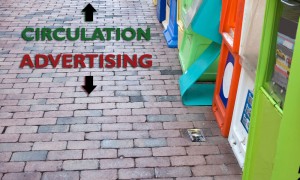
When a shooter opened fire inside a shopping mall in Columbia, Md. on Jan. 25, news teams sprang to action nationwide, giving the story the full journalistic treatment.
The New York Times and the Los Angeles Times dispatched their own reporters to the suburban mall outside Washington, D.C., as did The Washington Post, CNN and national TV networks. Newspapers in Boston, Denver, Seattle, Tampa and even Honolulu immediately ran Associated Press accounts on their websites.
The extensive national media coverage continued for hours after police announced that the shooter, Darion Marcus Aguilar, had killed two mall employees and then himself, effectively ending the danger for the surrounding community.
Before it was over, the suburban shooting would draw far more media attention than urban violence typically does, including drug-related and domestic shootings that claim more lives than the Columbia Mall event.
Why, exactly, do mall and school shootings attract such intense media scrutiny? Is it justified?
Kelly McBride, an ethicist at the Poynter Institute, believes several factors combine to put the national media spotlight on events like the Columbia shooting. One is that such public shootings tend to occur less frequently than the seemingly routine urban violence throughout the country. Another is that most mall and school shootings get reported in real time, while domestic and drug killings are often over by the time they are reported.
And with breaking news involving violence, McBride said, “there’s a business imperative to it, because you know the audience is going to follow that story.”
Breaking news clearly was a factor in the decision to give the story full coverage at The Washington Post, according to Josh White, the weekend editor who was working that Saturday.
“Any active shooter situation for us is potentially a very big deal, something that we want to be involved in covering from the very beginning,” White said. “We were very quickly all talking about what we might be looking at, what we might need in terms of reporting resources, research resources, getting photo to the scene, plans for what to do on the Web.”
McBride said geography, familiarity, assumptions and business imperatives mold the fiscally stretched media’s coverage of shootings.
While the nation “as a whole” might find it more shocking when somebody is shot in a mall, she said that doesn’t mean that a shooting in a housing project in Baltimore isn’t as shocking to the family of the victim.
She said news organizations’ predictable shooting coverage decisions place “a different value on different lives based on where the homicide occurs.”
“When we do that,” she added, “we dismiss the value of poor people, and a lot of time, the value of people of color because of where the violence happens.”
Matt Zapotosky, a reporter who has been covering the aftermath of the Columbia shooting for The Post, said a double murder in nearby Prince George’s County would draw 12 inches in the newspaper when he was on the police beat there — perhaps because the county had as many as 100 homicides a year.
“There is a difference,” Zapotosky said. “In those cases, they don’t resonate with people enough, because they think, ‘It couldn’t happen to me. I’m not in the drug trade. I’m not in a gang. I’m not involved in the things these people are involved in.’”
McBride pointed to a “primal fear” that everyone has of violence, while admitting she made those “exact same judgments” about news value when she was a police reporter in Cleveland.
“It’s very easy to sell a story about an act of violence in an affluent place or in the workplace, or something that was random,” she said. “It’s a very easy story to cover. You show up, you interview witnesses, you take the police press conferences, you do some digging.”
White and Zapotosky said they felt it was important to write about the shattered sense of safety resulting from a shooting in a public place.
“There are domestic shootings that are really awful. There are shootings on city streets that are really awful. Frankly, all of them are awful,” Zapotosky said. “They just don’t resonate with our readers like something like this does.”
White said residents of the Washington metropolitan area are particularly sensitive to public acts of violence, partly because of the location and how it impacts people. “Almost any event that happens like this in public, there’s a concern,” he said. “One of the questions you might ask is, ‘Is this happening as a public statement? Is this terrorism?’”
Andrew Metcalf, who covered the shooting for Columbia Patch, said he believed the story “hit a nerve with the national audience” because the country “is hyper-sensitive to these types of shootings” in the wake of large-scale public shootings in recent years.
McBride also cited business challenges facing media companies as today’s “attention economy” makes them fight for eyes.
“Fear is an easy, cheap way in the short term to win that battle,” she said. “In the long term, it will harm your trust relationship with your audience.”








Leave a Comment